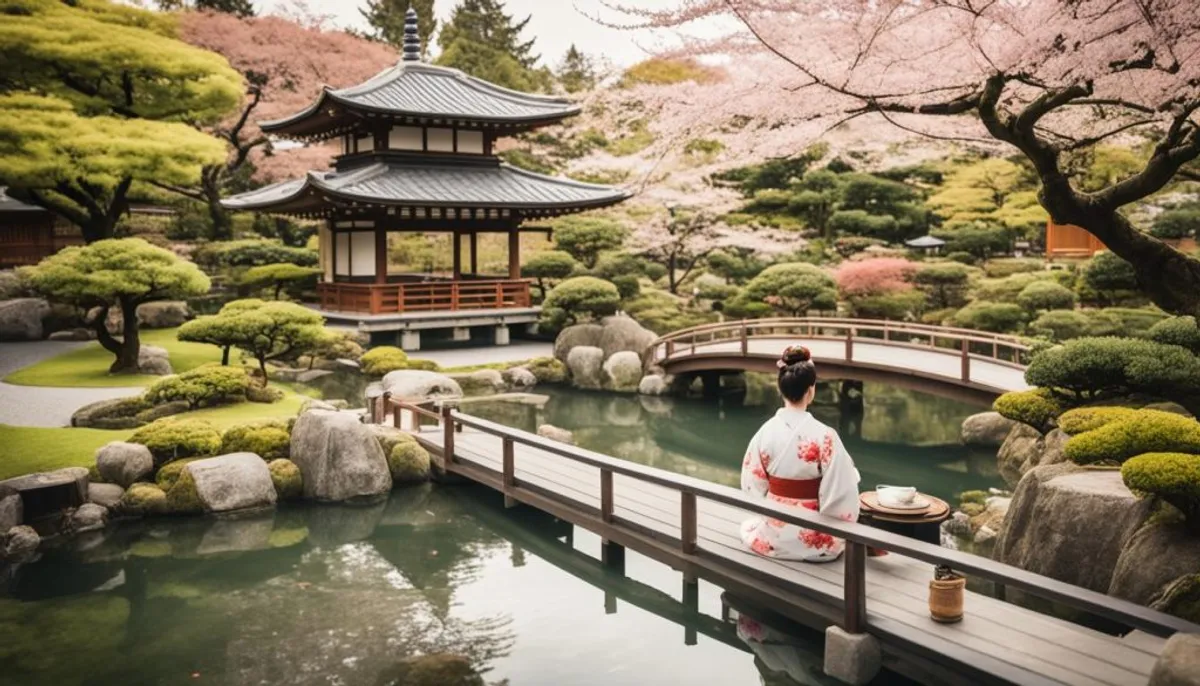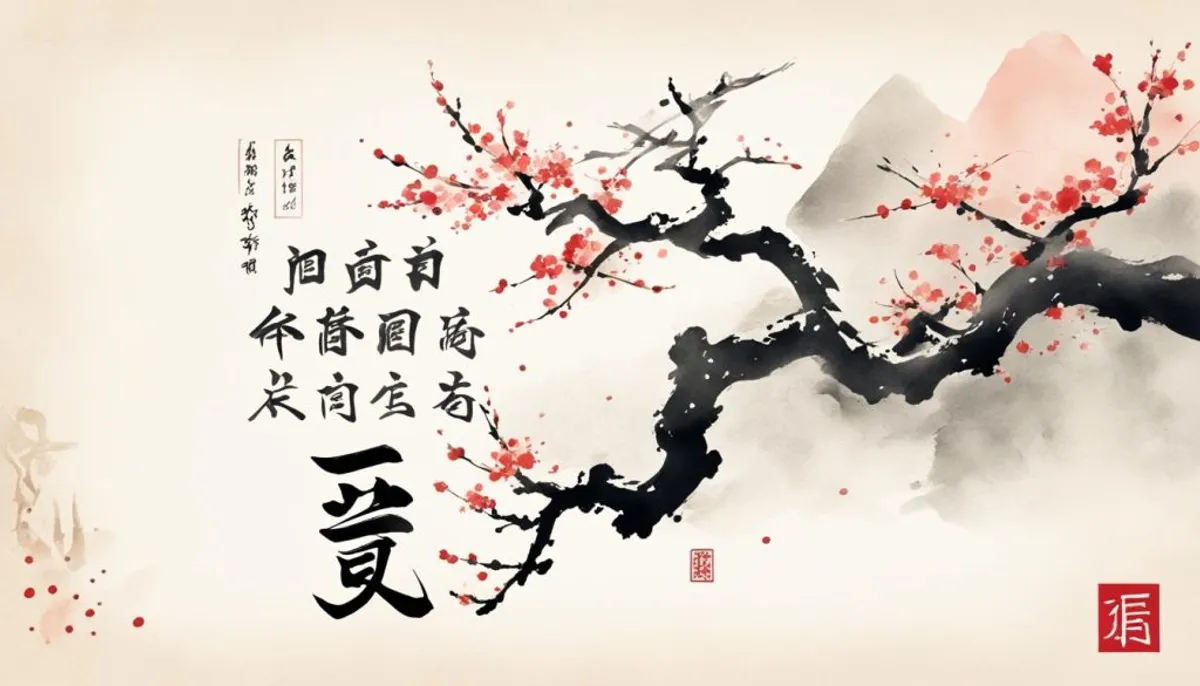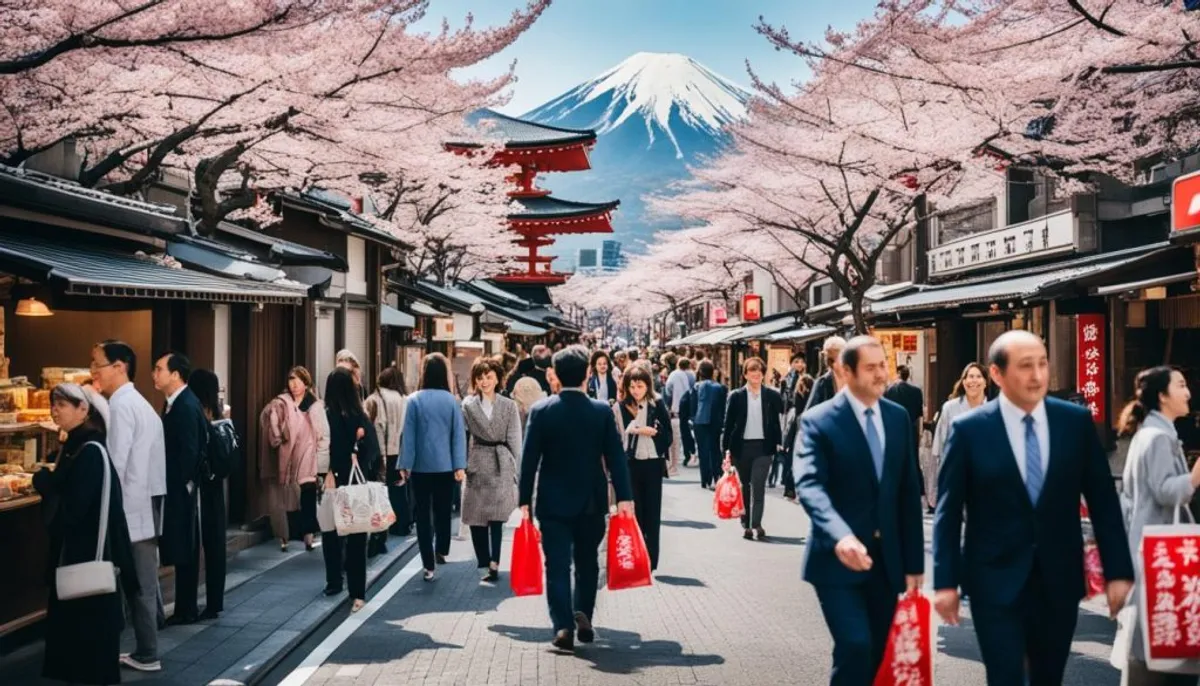The Japanese culture comes from China and Korea. It was isolated for a long time, from 1603 to 1868. This period, called sakoku, was marked by the Tokugawa shogunate. The arrival of the "black ships" marked the beginning of the Meiji era in 1868.
The Japan is famous for its rich culture. It is home to many arts, traditions, and history. The Japanese way of life is also unique.
The philosophy and religions of Japan have created a special society. Japanese customs are appreciated all around the world.

Introduction
The Japanese culture is a fascinating heritage, stemming from various influences. It has developed a unique identity despite its isolation. Today, it is one of the most captivating cultural heritages.
The Japanese culture has preserved its traditions while opening up to external influences. This balance has created a unique society, full of refinement and respect for traditions.
Japan is rich in language, religion, arts, and customs. It is a captivating journey into a rich and mysterious universe. Let us explore the soul of Japan together.
| Key characteristics of Japanese culture | Examples |
|---|---|
| Ancestral traditions | Tea ceremony, martial arts, craftsmanship |
| Influence of religions and beliefs | Shintoism, Buddhism |
| Attachment to harmony and perfection | Ikebana, calligraphy, architecture |
| Respect for codes of conduct and etiquette | Greetings, gestures, rules of politeness |
The Japanese language
The Japanese language is essential to Japanese culture. Its origins are still debated, but it has borrowed a lot from Mandarin. It has also been influenced by the Chinese writing brought by Buddhist monks. Japanese is closely related to the Ryukyu Islands dialect, which is part of the Japonic language family.
Origins and influences
Japanese does not belong to any known language family, but it has unique traits. It has adopted words from Mandarin and its writing is based on the Chinese characters brought by Buddhist monks. This influence has created a unique Japanese language, which remains connected to its roots while being distinct.
The Japanese language is at the center of both ancient and modern Japanese culture. It showcases the richness and diversity of Japanese identity. It is also a strong link to the history and traditions of the country.

| Origin | Influence | Characteristics |
|---|---|---|
| Japonic language family | Mandarin, Chinese writing, Buddhism | Enriched vocabulary, writing system inspired by Chinese characters |
What is Japanese culture?
Japanese culture is a fascinating blend of traditions and modern influences. It is rooted in a rich history and unique geography. This creates a diversity of customs, lifestyles, and philosophies.
Japan has preserved and transmitted its traditions through generations. It features everything from traditional architecture to martial arts, including tea ceremonies. Japanese lifestyles are marked by respect, harmony, and refinement.
The Japanese philosophy, influenced by Shintoism and Buddhism, has shaped the thoughts and actions of the Japanese people. This quest for balance and perfection is evident in Japanese arts and crafts. They are expressions of the Japanese soul.
| Traditions | Customs | Lifestyle |
|---|---|---|
| Tea ceremonies | Formal greetings | Respect for harmony |
| Martial arts | Purification rituals | Aesthetic sense |
| Traditional architecture | Table etiquette | Concept of perfection |
Japanese culture is a fascinating universe. It combines ancestral traditions, philosophy, and modern influences. This creates a unique and captivating identity.
Religions and beliefs
Japan is known for its Shintoism and Buddhism. Most Japanese people practice both religions. This creates a syncretism called Shinbutsu shūgō. These two traditions have blended, creating a unique cosmology.
Shintoism and Buddhism
Shintoism, originating in Japan, and Buddhism, which came from China, coexist well. The Japanese celebrate the festivals of both religions together. This syncretism demonstrates the open-mindedness of Japanese culture.
- The Shintoism values nature, rites of passage, and ancestors.
- The Buddhism brings philosophical ideas, meditation practices, and a vision of compassion.
- These two traditions create an animistic and transcendent worldview, deeply rooted in Japan.
Arts and crafts
Japanese culture is full of traditional arts and crafts. They showcase the creativity and skill of the Japanese people. This includes calligraphy, painting, ceramics, jewelry, and ikebana (flower arranging).
Performing arts
Japan has performing arts such as Noh theater, Kabuki, and Bunraku. There is also ancient dancing, Kagura, and Butoh. These arts are known for their complexity, symbolism, and ability to evoke emotions.
Japanese music is complemented by instruments like the shakuhachi and the shamisen. These arts are essential to Japanese cultural identity.
- The Noh theater features historical or mythological characters.
- Kabuki is known for its vivid costumes, makeup, and choreography.
- Bunraku is a puppet theater with visible manipulators.
These performing arts of Japan captivate audiences. They maintain a rich and captivating cultural tradition.
Daily life and etiquette
Life in Japan is full of customs and rules of etiquette. These elements are key to integrating well into Japanese society. Politeness, modesty, and punctuality are very important.
Gestures like bowing to greet show the importance of etiquette. The tea ceremony, gardening, and public baths highlight the significance of social codes in Japanese culture.
Etiquette and customs
Etiquette is essential in Japanese daily life. There are important etiquette rules for integrating well:
- Greet by bowing, according to the required degree of politeness
- Remove shoes before entering a home
- Avoid pointing or crossing arms
- Offer and receive gifts with both hands
- Be punctual and do not keep others waiting
These customs demonstrate respect and consideration for others. They are key values of Japanese culture.
| Custom | Meaning |
|---|---|
| Tea ceremony | Ritual of preparing and tasting green tea, highlighting harmony, purity, and tranquility |
| Gardening | Art of shaping miniature gardens reflecting nature and beauty, a symbol of meditation and serenity |
| Public baths | Tradition of bathing in natural hot springs, promoting well-being and friendliness |
These traditions and customs show the importance of etiquette and etiquette in daily life.

Conclusion
The Japanese culture is rich and unique, the result of long-standing influences and evolutions. It spans from ancient traditions to modern arts, including language and customs. Japan is a fascinating and unparalleled cultural universe.
Exploring this Japanese culture and the Japanese cuisine allows us to better understand Japanese society. Its traditions, arts, and way of life reflect a millennia-old civilization. This culture is rich and adaptable.
Japanese culture is full of treasures to discover, such as calligraphy, ikebana, kabuki, and onsen. Immersing ourselves in this Japanese culture helps us appreciate the complexity and beauty of this country.
RelatedRelated articles


